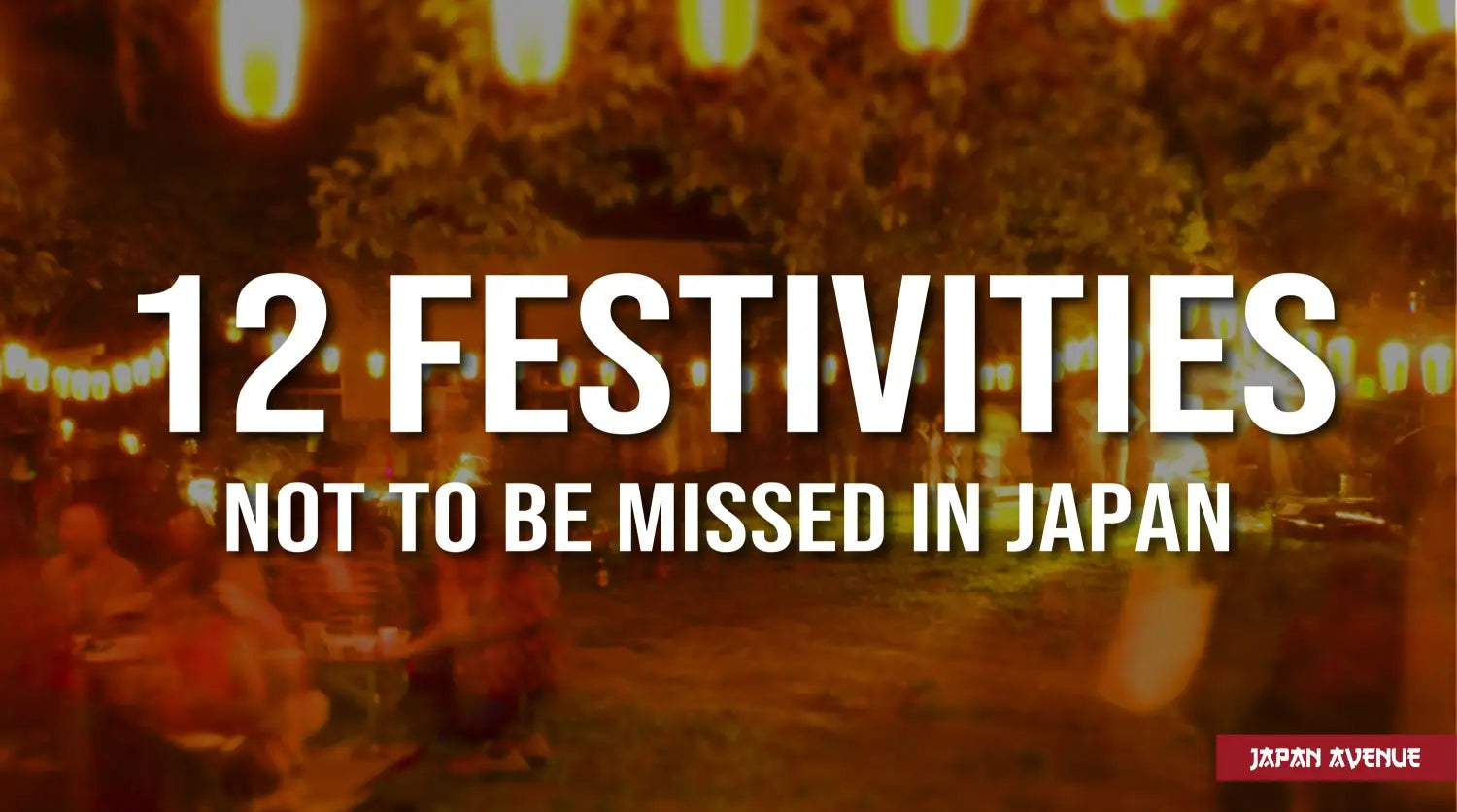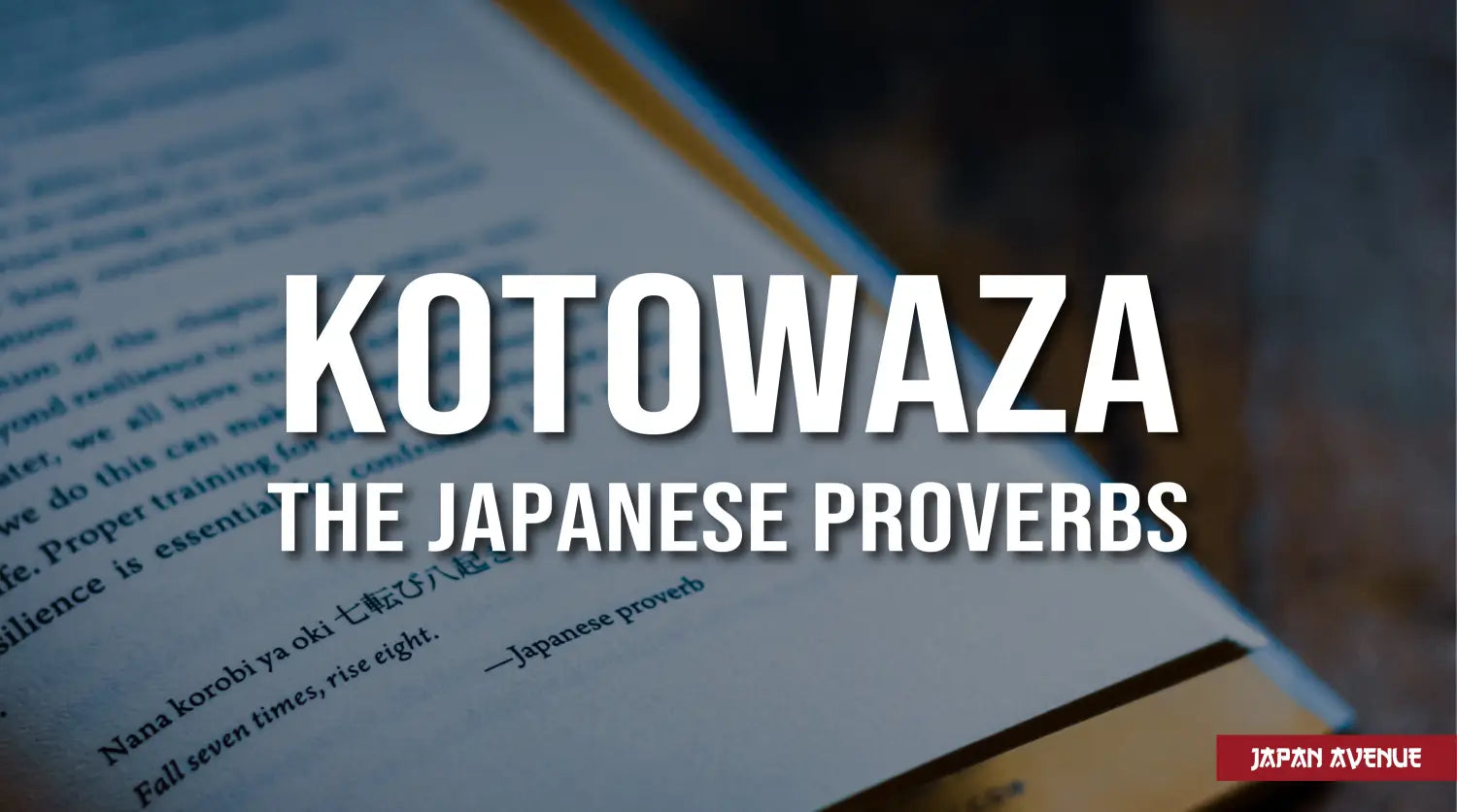One thing is sure, there is no such thing as being bored in the Land of the Rising Sun!
In the archipelago, the year is punctuated by many traditional celebrations. Between the Japanese New Year, the arrival of spring, the celebration of summer or even the children's ceremonies, there is plenty to enjoy season after season.
Discover 12 Japanese festivals and celebrations that are not to be missed.
1. ⛩ Japanese New Year

The Japanese New Year is the family holiday par excellence. On this occasion, most Japanese people meet their relatives during several days. However, December 31st is very different from what we are used to. No party or champagne, but a TV show and religious rituals. Indeed, on the evening of December 31st, Japanese people watch Kohaku Uta Gassen, a very popular singing contest that has been going on for more than 60 years. Also, it is customary to eat soba toshikoshi for a long life.
As midnight approaches, the temples ring 108 bells announcing the new year. From then on, the places of worship are crowded with people for the first prayer of the year (hatsumode).
On New Year's Day, Japanese people head early to the mountains or to the coast to admire the sunrise. Children receive presents from the older ones and the whole family enjoys traditional food.
2. 🍾 Seijin no Hi, the coming of age day

The second Monday of January is a holiday celebrating adulthood (set at 18 as of April 2022). The young people who have or will have the age of adulthood during the school year are honored. On this day, we can see many young women dressed in furisode (kimono with long sleeves). The young men prefer the suit and tie instead of the traditional clothes. During the official ceremony, these new citizens are given a speech by the mayor about their responsibilities and receive gifts. After this solemn celebration, they go to bars and other trendy places to have fun with friends.
3. 👿 Setsubun, the arrival of spring

This is the famous bean throwing festival which announces the arrival of spring (according to the lunar calendar). Temples and shrines organize ceremonies for general public. Folk rituals, demon dances, shows or special guests animate many places. Also, traditions are invited in homes. On this day, the father of the family dresses up as an oni demon and the children throw roasted soybeans at him. By doing so, they keep away the evil spirits that try to invade the home. Afterwards, Japanese people eat a number of beans corresponding to their age and swallow a long maki for good luck.
4. 🍫 Valentine's Day in Japan

Valentine's Day in Japan has little to do with our western lover's day. First of all, no bouquets of red roses, but chocolates. There are several kinds of chocolates: Women offer homemade honmei-choco to their beloved while tomo-choco are for their friends. Also, according to a strange convention, Japanese women have to bring giri-choco to their boss and male colleagues. And how about the men in all this, what do they do? Nothing, because they save themselves for White Day, one month later!
5. 🎎 Hina matsuri, the girls' day

Also called Dolls' Day, March 3 is entirely dedicated to little girls. At that time, the nobility offered dolls to the imperial family as a talisman. These were passed on to each generation. The custom has since taken root and families set up an altar with figurines representing the imperial couple. On this special day, family and friends gather to enjoy pastries and little girls wear beautiful kimonos. Lucky dolls exhibition, culinary specialties, gifts... this traditional Japanese festival which dates back to the Heian period is like a giant birthday party.
6. 🌸 Hanami, the Japanese festival of cherry blossoms

March to May is the season of sakura blossoms. Japanese people celebrate the effervescence of spring by contemplating the cherry blossoms. Family picnic under the shade of trees, special pastries dedicated to the event: the Hanami tradition dates back to the Nara period. In the past, peasants thought that deities came to hide in cherry trees in spring. They would then come to put offerings under the branches. But it was Emperor Saga who started the tradition at the imperial court. The spring festival in Japan as we know it today was democratized during the Edo period. Sumptuous meals were then organized under the trees, in full bloom. In Japanese culture, this spectacle of nature represents the cycle of life and ephemeral beauty.
7. 👦 Komodo no Hi, the boys' festival

After the Hina Matsuri, boys also have their own day of celebration with the Komodo no Hi. May 5th is Children's Day and in particular for little boys. This traditional Japanese celebration called Tango no sekku was renamed Komodo no Hi in 1948. Inspired by the dragon boat festival in China, it then became the boys' day under the influence of the Samurai. Today, Komodo no Hi is a holiday where people pray for the health and happiness of children. It is also an occasion to do some purification rituals. Shobu and yomogi leaves are hung on the doors and children bathe in water infused with iris. Like the Hina Matsuri, but in a samurai version, dolls in armor and warrior helmets are displayed on an altar. Guests drink Sake and taste pastries prepared for the occasion. During this period, banners of koi carp, symbols of courage, can be found, floating in the streets.
8. ✨ Tanabata, the star festival

On July 7 (or August 7 in some areas), cities are decked out in colors and lanterns to celebrate the Tanabata Festival. Tanzaku, fukinagashi and origami decorate houses, shrines and public places. On this day, we celebrate the Vega and Altair stars which symbolize a mythical couple (the cowherd and the weaver). According to the old Chinese legend, the two lovers separated by the Milky Way meet once a year. For the Tanabata Matsuri, Japanese people wear a yukata. They write prayers on colored paper and hang them on bamboo branches. Time to make a wish!
9. 🥳 Gion matsuri, the famous summer festival

In Kyoto, the Gion matsuri is a large parade of floats that takes place in July. Dating back to the 9th century, this famous matsuri was originally a procession of small portable temples used to ward off the plague. During the Muromachi period, this Japanese festival became an opportunity for merchants to display their wealth through majestic floats. Since 2009, those of saki-matsuri (July 17 celebration) are registered as a UNESCO heritage. A real must-see!
10.🏮 O-bon, the festival of the dead

Each summer, from August 13th to 15th (sometimes July depending on the solar calendar), Japanese people honor their ancestors with the O-bon. This Buddhist festival is comparable to All Saints' Day in Japan and was imported from China 500 years ago. At this time of the year, it is said that the deceased visit the living. Many Japanese people return to their hometowns and join their families to pray. Altars and temples are decorated with offerings and people dance (obon odori) in traditional clothes to the rhythm of taiko. In front of the houses, lanterns are lit to guide the souls. The obon matsuri is truly a unique and joyful experience.
11. 🎃 Halloween in Japan, a Japanese custom

The whole month of October, Halloween is celebrated in the Land of the Rising Sun. Make way for devilish decorations in the busy streets and stores. People parade in the streets, dressed as black cats or Pikachu and go to costume parties. It seems that Japan has appropriated this commercial festival. In Harakuju, the famous "Pumpkin Parade" takes place, which is not to be missed. Also, the giant Tokyo Disney Land organizes big events on the theme. Finally, Starbucks and other businesses are riding the wave with bloody Frappucino and pumpkin cakes.
12. 🎅 Christmas in Japan, a Western tradition revisited

Since Japanese people never do anything like others, Christmas is a holiday dedicated to lovers and friends. In big cities and shopping malls, we find the Western atmosphere with illuminations and Christmas trees. Santa Clauses take over the stores and seasonal songs are heard everywhere. On December 24th, many Japanese people go to Tokyo Disneyland. Couples go to restaurants for a romantic evening while others go to KFC before going to bars with friends.
From traditional celebrations to national holidays to imported events, Japan offers a unique folklore. Which Japanese holiday inspires you the most?



